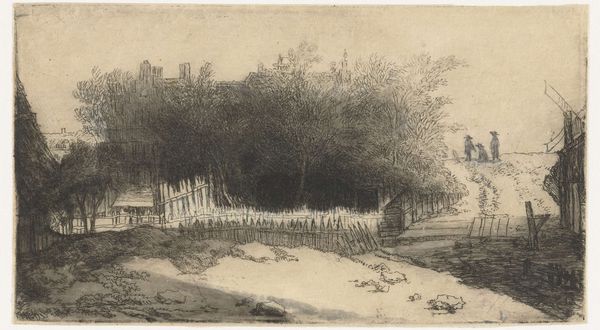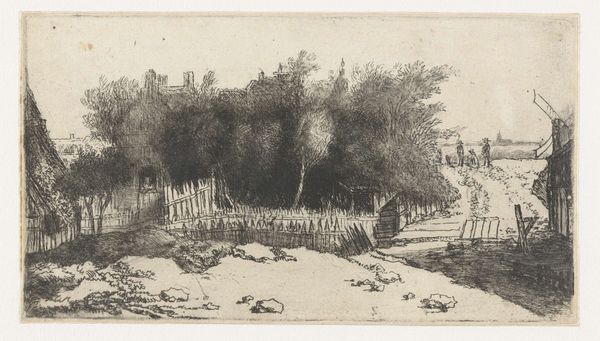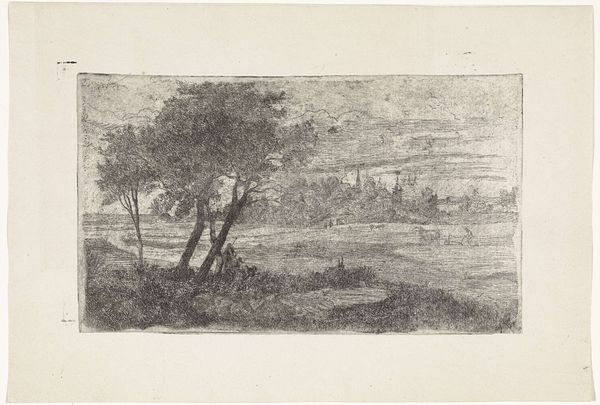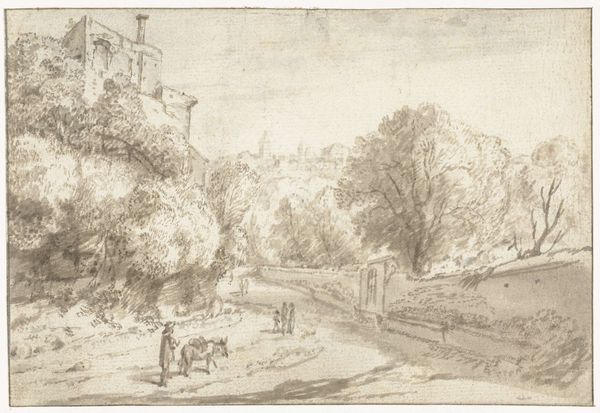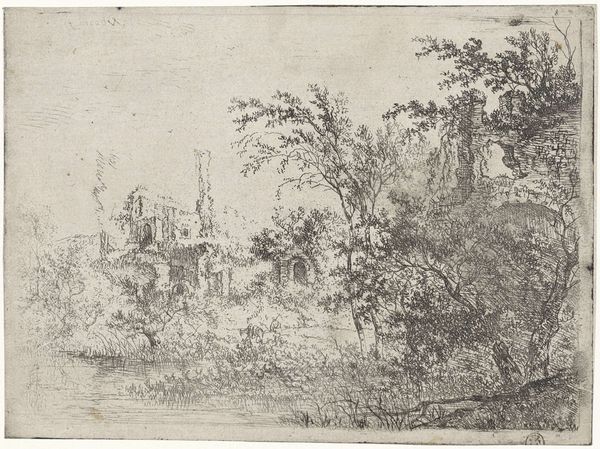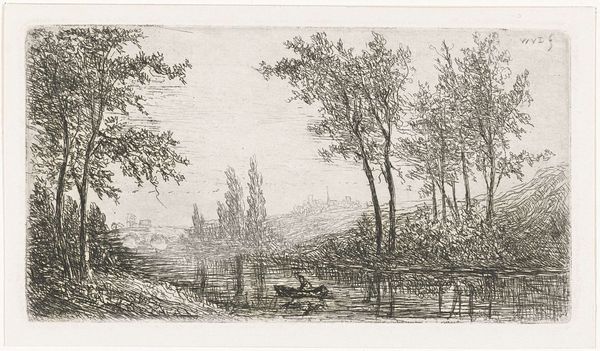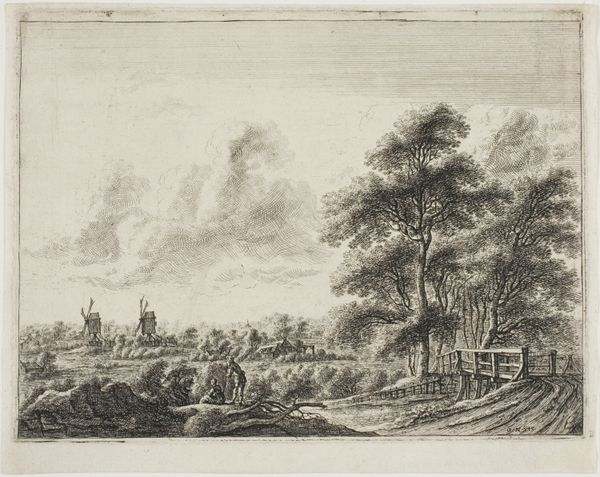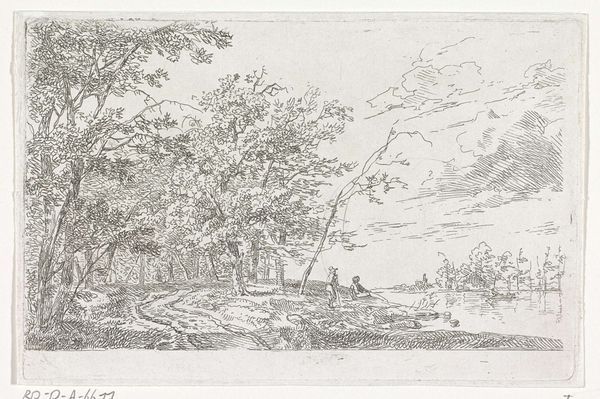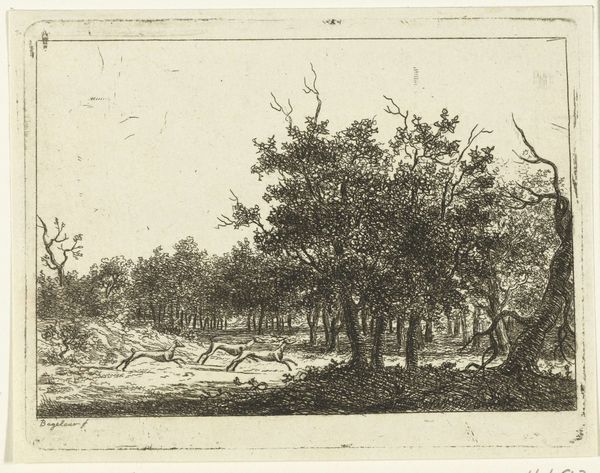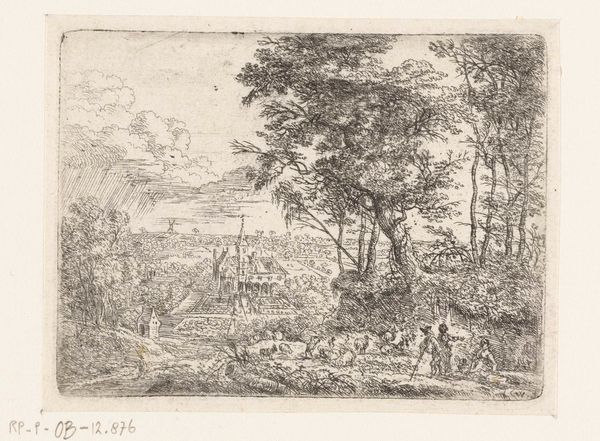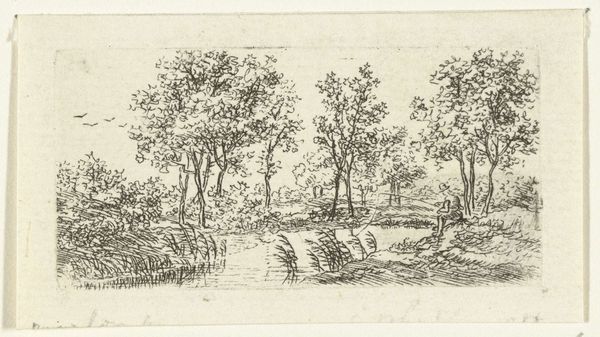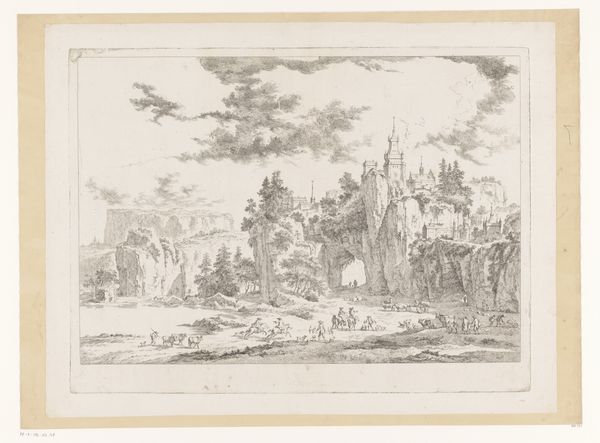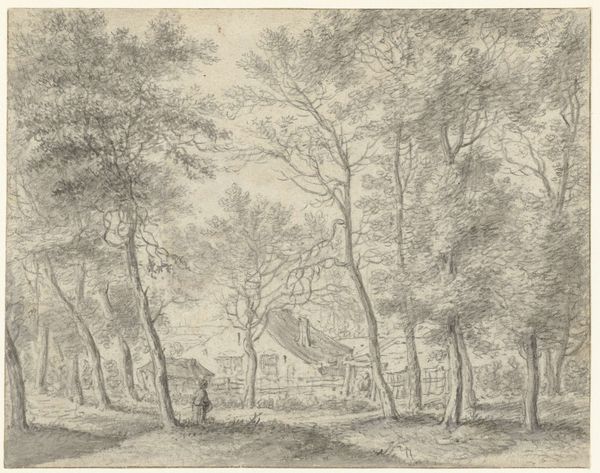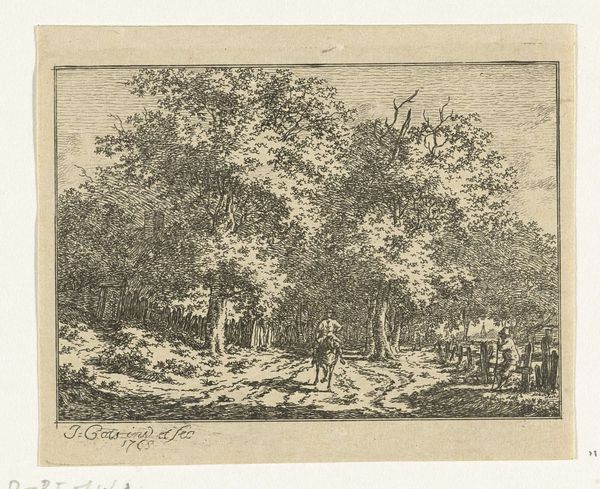
drawing, print, etching
#
drawing
#
dutch-golden-age
# print
#
etching
#
landscape
Dimensions: height 90 mm, width 163 mm
Copyright: Rijks Museum: Open Domain
Philips Koninck created this landscape with a white fence using etching, a printmaking technique, sometime in the 17th century. The process begins with a metal plate, usually copper, covered with a waxy, acid-resistant ground. The artist then draws through the ground with a pointed tool, exposing the metal. The plate is then immersed in acid, which bites into the exposed lines, creating an image that can be inked and printed. The material qualities of the metal plate and the biting process allow for incredibly fine, detailed lines. Look closely, and you will see a complex network of marks that define the landscape. The atmospheric perspective and tonal variations, achieved through varying the density and depth of the etched lines, give the image a remarkable sense of depth and light. Consider too, the social context. Printmaking allowed for the wide dissemination of images, contributing to a growing market for art among the rising merchant class in the Dutch Golden Age. So, in understanding this print, we gain insight into the world of artistic production and consumption during a pivotal moment in history, and the role that skilled labor played within that context.
Comments
No comments
Be the first to comment and join the conversation on the ultimate creative platform.
